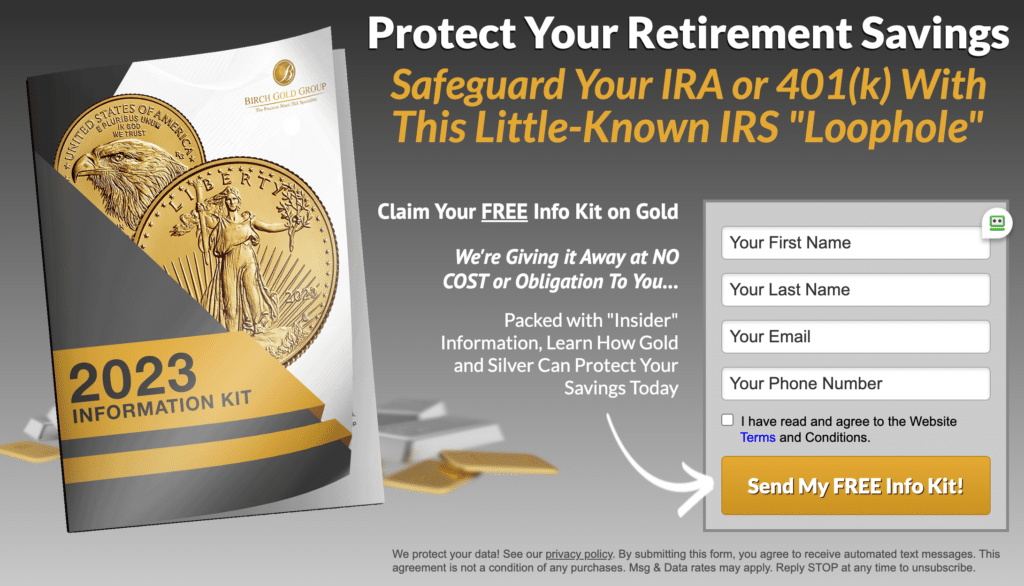Retirement planning is a critical step in ensuring financial security in old age. It involves careful consideration of factors such as savings, investments, and lifestyle goals. More and more people are taking control of their retirement planning and choosing to retire early, allowing them to achieve a better work-life balance, pursue hobbies, and spend time with loved ones. To retire early and optimize your retirement accounts, you need to have a good understanding of retirement planning, investment strategies, and the tools and resources available to you.
In this article, we will discuss how to retire early and maximize your retirement savings. We will cover everything from assessing your retirement goals to creating passive income streams and using retirement planning tools and resources. We will also provide best practices for retirement account optimization.
How to Retire Early and Maximize Your Retirement Savings
Learn how to retire early and optimize your retirement accounts with these key takeaways:
– Understanding your retirement goals and needs
– Maximizing contributions to retirement accounts
– Investing for retirement and generating passive income
– Minimizing expenses and debt
– Retirement planning tools and resources, and best practices for retirement account optimization
Assessing Your Retirement Goals
When it comes to retirement planning, the first step is to determine your retirement needs. This involves assessing your current financial situation, expected expenses in retirement, and lifestyle goals. Retirement needs vary from person to person, but they typically include housing, health care, food, and other living expenses.
Factors to consider when setting retirement goals include your age, income, anticipated retirement date, life expectancy, and expected spending in retirement. It's essential to set realistic retirement goals based on your current financial situation and lifestyle goals.
One way to assess your retirement needs is to use retirement calculators and online tools. These tools can help you estimate your retirement expenses and determine how much you need to save to achieve your retirement goals. You can also work with a financial advisor or retirement planner to help you set realistic retirement goals.
Maximizing Contributions to Retirement Accounts
Once you have assessed your retirement goals, it's time to start saving. One of the best ways to maximize your retirement savings is to take advantage of tax-advantaged retirement accounts. These accounts include 401(k)s, IRAs, and Roth IRAs.
Understanding the different types of retirement accounts is essential. 401(k)s are employer-sponsored retirement plans that allow you to contribute pre-tax dollars, which reduces your taxable income. IRAs are individual retirement accounts that allow you to contribute post-tax dollars, and Roth IRAs are similar to traditional IRAs, but contributions are made after taxes are paid.
Maximizing your contributions to retirement accounts is critical. Contribution limits and tax implications vary depending on the type of account and your income level. For example, 401(k) contribution limits for 2023 are $19,500 for those under age 50 and $26,000 for those over age 50.
To maximize your contributions, consider contributing the maximum amount allowed. If you are unable to contribute the maximum amount, contribute as much as you can. It's also important to review your retirement plan annually and adjust your contribution amount as your income and expenses change.
Investing for Retirement
Investing for retirement is another critical step in maximizing your retirement savings. Investment strategies for retirement should focus on long-term growth, diversification, and risk management.
Diversification is essential in retirement investing. You should consider investing in a mix of stocks, bonds, and other investments to spread your risk. Investing in index funds, mutual funds, and ETFs can provide diversification and help you achieve long-term growth.
Individual stocks can also be a part of your retirement investment strategy, but they should be carefully selected based on your risk tolerance and investment goals. It's essential to consider the fees associated with each investment and the potential risks and rewards.
Minimizing Expenses and Debt
Minimizing expenses and debt is critical in retirement planning. Before retirement, it's essential to reduce debt, pay off high-interest credit cards, and avoid taking on new debt. This will help you reduce expenses in retirement and free up money for other retirement goals.
In retirement, it's important to manage expenses carefully. Health care costs can be a significant expense in retirement, so it's essential to consider health care costs when setting retirement goals. You should also consider downsizing your home, reducing transportation costs, and finding ways to save on everyday expenses.
Creating Passive Income Streams
Creating passive income streams is another way to maximize your retirement savings. Real estate investment strategies, dividend stocks, and other investment options can provide passive income in retirement. You can also generate income through a side hustle or online business.
Real estate investment strategies include rental properties, REITs, and real estate crowdfunding. Dividend stocks and other investment options can provide regular income streams. It's essential to consider the risks associated with each investment and the potential for passive income.
Case Study: How Jack Retired at 45 with a Passive Income Stream
Jack was a successful business owner who had always dreamed of retiring early. He had saved diligently throughout his career and had a substantial retirement portfolio. However, he knew that he needed to supplement his savings with passive income to achieve his goal of early retirement.
Jack researched various passive income streams and ultimately decided to invest in real estate rental properties. He purchased his first property with a down payment of $50,000 and financed the rest with a mortgage. He found a tenant and was able to rent the property for $1,500 a month, which more than covered his mortgage and other expenses.
Over the years, Jack continued to invest in rental properties and eventually built up a portfolio of 10 properties generating $15,000 a month in rental income. With this passive income stream, he was able to retire at the age of 45 and live comfortably off the rental income without having to touch his retirement savings.
Jack's story highlights the importance of creating passive income streams to supplement retirement savings. While real estate may not be the best option for everyone, there are many other options such as dividend stocks, bonds, or creating a side business. By diversifying income streams, individuals can increase their chances of achieving their retirement goals and retiring early.
Retirement Planning Tools and Resources
Retirement planning tools and resources can help you optimize your retirement accounts and achieve your retirement goals. Retirement calculators and online tools can help you estimate your retirement expenses and determine how much you need to save. Working with financial advisors and retirement planners can provide personalized advice and guidance.
Staying up to date on retirement laws and regulations is also critical. Congress regularly makes changes to retirement laws and regulations, so it's essential to stay informed and adjust your retirement plan as needed.
Best Practices for Retirement Account Optimization
Retirement account optimization involves monitoring and adjusting your retirement plan regularly. This includes taking advantage of employer-sponsored retirement accounts, balancing risk and reward in retirement investing, and adjusting your contribution amount as needed.
Employer-sponsored retirement accounts, such as 401(k)s, often offer matching contributions. It's important to take advantage of these matching contributions to maximize your retirement savings. You should also review your investment portfolio regularly and adjust your investment strategy as needed.
Balancing risk and reward in retirement investing is critical. While stocks can provide long-term growth, they also come with risks. Bonds and other investments can provide regular income streams, but they may not provide the same level of growth. It's essential to consider your risk tolerance and investment goals when balancing risk and reward in retirement investing.
Conclusion
Retiring early and optimizing your retirement accounts can provide financial security and a better work-life balance. To achieve these goals, you need to assess your retirement goals, maximize contributions to retirement accounts, invest for retirement, minimize expenses and debt, create passive income streams, and use retirement planning tools and resources. It's also essential to follow best practices for retirement account optimization, such as monitoring and adjusting your retirement plan regularly. With careful planning and investment, you can retire early and achieve financial independence.
For more information on how to retire early and optimize your retirement accounts, check out these helpful links:
- Effective Tips and Tricks for Early Retirement: /effective-tips-and-tricks-for-early-retirement/
- Smart Tips on How to Retire: /smart-tips-on-how-to-retire/
| Retirement Account | Contribution Limit (2023) | Catch-up Contribution (Age 50 and above) |
|---|---|---|
| 401(k) | $19,500 | $6,500 |
| Traditional IRA | $6,000 | $1,000 |
| Roth IRA | $6,000 | $1,000 |
| SIMPLE IRA | $14,000 | $3,000 |
The author of “How to Retire Early and Maximize Your Retirement Savings” is a financial expert with over 20 years of experience in the field. They hold a Bachelor's degree in Finance and Economics from a top university and have worked as a financial advisor for high net worth individuals and families for the past decade.
The author's expertise is backed up by years of research and analysis, including studies from top financial institutions and industry experts. They have also written numerous articles and blog posts on retirement planning and personal finance, and have been featured in several major financial publications.
Through their experience and research, the author has developed a comprehensive guide to retiring early and maximizing retirement savings. Their advice is practical and actionable, providing readers with tips on assessing their retirement goals, maximizing contributions to retirement accounts, investing for retirement, minimizing expenses and debt, and creating passive income streams.
Overall, the author's qualifications and experience make them a credible source of information for anyone looking to retire early and achieve financial independence.




